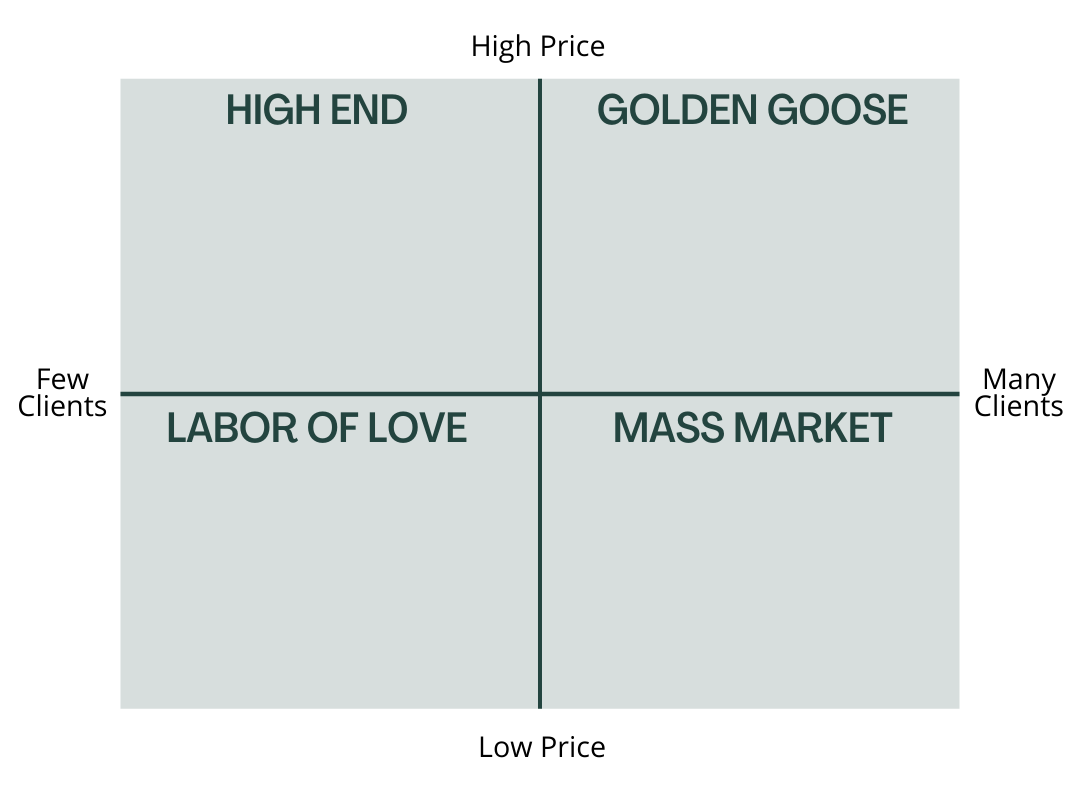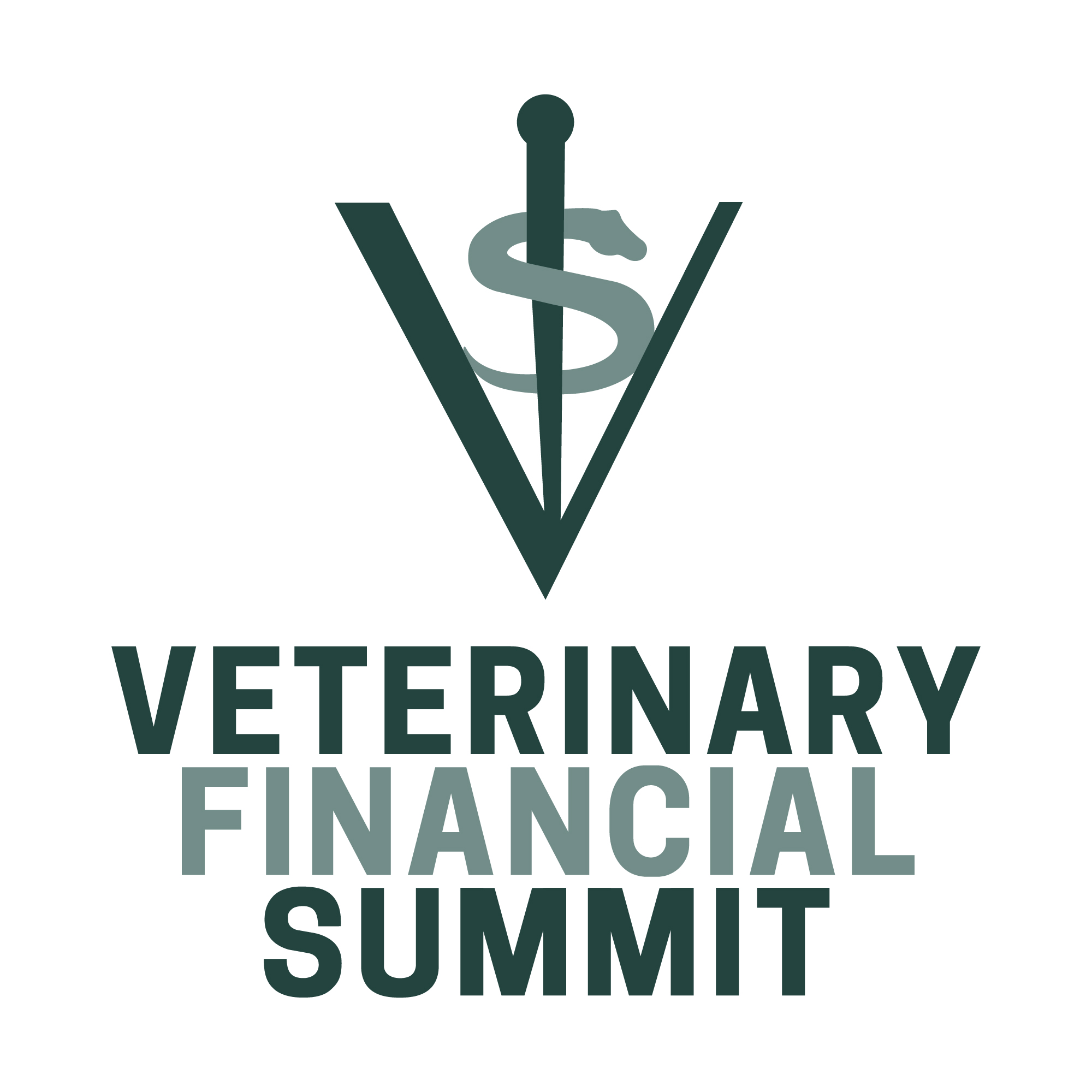The Demand Matrix
Sam wanted to launch an ultrasound service to complement diagnostic options. Why? Because of a personal interest in ultrasound. “The fun is in the hunt” as they say…
There was no real thought process behind the decision. No market study. No team member poll. No communication with Sam’s associates.
Sadly, after a couple of weeks of excitement, the ultrasound machine sat in a corner of the treatment room, gathering dust…
Sounds familiar? What went wrong?
Well, Sam should have used the Demand Matrix.
Popularized by our BFF and best-selling author Ramit Sethi, the Demand Matrix is a simple way to help you make a rational, reasoned, business choice rather than an emotional, knee-jerk, “sounds like fun” decision.

Demand Matrix concept credit goes to Ramit Sethi.
The matrix has 4 quadrants, each related to a different level of profitability. They are based around 2 axes:
- The horizontal axis represents the number of clients interested in your proposed product, service or business.
- The vertical axis represents the amount of money clients are willing to pay for said product, service or business.
The four quadrants are as follows:
Quadrant 1: Labor of Love
Quadrant 1 defines low cost/low demand products and services.
They don’t cost much and – double whammy – are in low demand.
So why bother, you ask?
Because the product or service may be related to a specific request, or a special interest.
Examples include:
- Your self-published book on the Azawakh (which as you know is a rare African sighthound) or the Korat (obviously a rare cat breed from Thailand).
- The lovely bandanas made by your faithful receptionist, who loves making them and sells about 7 per year.
- Printed postop instructions booklets given to clients… that are most likely never read before they hit the recycling bin.
Products or services in this quadrant aren’t likely to generate any substantial profit and therefore are rarely worth the time and investment. If you disagree, just realize it’s truly a labor of love.
Quadrant 2: Mass Market
Quadrant 2 encompasses low cost/high demand products and services.
These ideas can be turned into profitable products and services that many of your clients need and want. This quadrant is a step in the right direction. Finding ideas that fit may not be easy, but a good brainstorming session from your team and your clients may help.
Here are a few examples:
- Offering vaccine clinics. Not only will you help protect pets, but many clients who cannot afford regular veterinary care might take advantage of vaccine clinics. This type of event may also help to bring in new clients and patients to your practice.
- Bundling frequently used services like nail trims, anal gland expressions and ear cleanings. Many clients go to their groomer for these services, but if you can offer these services at a reasonable cost, they might add these services to exams since they’re already in your exam room. You could also schedule them as technician appointments.
- Offer puppy and kitten socialization classes to new pet owners. First time pet owners often have lots of questions, and can sometimes feel overloaded with information provided during their first visit. Offer them to sign up for classes with one of your knowledgeable team members. They can get answers to questions while providing their new pet with a safe way to socialize.
Quadrant 3: High-end
Quadrant 3 includes high cost/low demand products and services.
Think Ferraris and Lamborghinis…
High-end products and services are high in price, so few clients can afford them. They tend to be specialty items or services. Because they are higher in price, they tend to attract fewer clients, besides those who will spare no expense for their pet.

- Pet painting. Some clients may want to have their dog look like a zebra. It makes them happy, and they are able to pay the high prices.
- Hyperbaric oxygen therapy. This uncommon treatment isn’t offered by many practices, and few patients need it. But it can help with various indications, such as wound healing.
- TPLO surgeon specializing in Cane Corsos; canine artificial insemination; advanced exotic pet care. These services are a niche within a niche within a niche. If you can market them properly, you might be able to attract a unique clientele.
Having unique services will differentiate you from other local practices. Perform serious market research before launching high-end services.
Quadrant 4: Golden Goose
Quadrant 4 is the Holy Grail, with high cost/high demand products and services.
They are desired by many clients despite the higher price. Services in that quadrant include orthopedic surgery, overnight care, echocardiography, rehabilitation services and advanced dentistry.
Let’s face it, pets will continue to tear their ACL, break a bone or need canine extractions.
So pick and choose new services and products wisely. This will make your practice better liked by clients and more profitable. In turn, that will help you upgrade your equipment, give raises to your team, and ensure a comfortable retirement. It will also help you launch a business that will predictably be successful.
Phil Zeltzman, DVM, DACVS, CVJ, Fear Free Certified
Interested in learning more about $$$?
Subscribe to the Blog
Join the Community
Attend the Summit
Learn about the Mastermind
